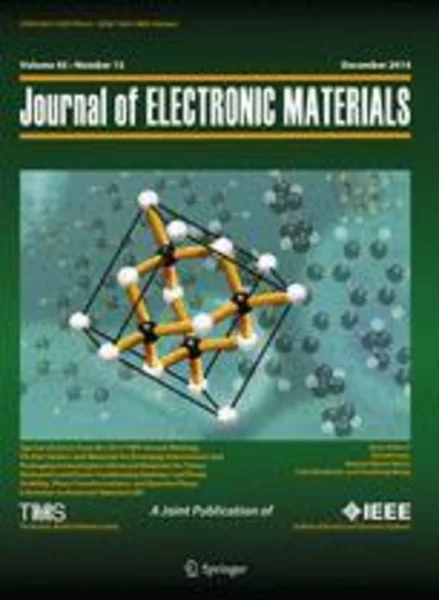-
simulations for the development of thermoelectric measurements
جزئیات بیشتر مقاله- تاریخ ارائه: 1392/07/24
- تاریخ انتشار در تی پی بین: 1392/07/24
- تعداد بازدید: 799
- تعداد پرسش و پاسخ ها: 0
- شماره تماس دبیرخانه رویداد: -
in thermoelectricity, continuum theoretical equations are usually used for the calculation of the characteristics and performance of thermoelectric elements, modules or devices as a function of external parameters (material, geometry, temperatures, current, flow, load, etc.). an increasing number of commercial software packages aimed at applications, such as comsol and ansys, contain vkernels using direct thermoelectric coupling. application of these numerical tools also allows analysis of physical measurement conditions and can lead to specifically adapted methods for developing special test equipment required for the determination of te material and module properties. system-theoretical and simulation-based considerations of favorable geometries are taken into account to create draft sketches in the development of such measurement systems. particular consideration is given to the development of transient measurement methods, which have great advantages compared with the conventional static methods in terms of the measurement duration required. in this paper the benefits of using numerical tools in designing measurement facilities are shown using two examples. the first is the determination of geometric correction factors in four-point probe measurement of electrical conductivity, whereas the second example is focused on the so-called combined thermoelectric measurement (ctem) system, where all thermoelectric material properties (seebeck coefficient, electrical and thermal conductivity, and harmanmeasurement of zt) are measured in a combined way. here, we want to highlight especially the measurement of thermal conductivity in a transient mode. factors influencing the measurement results such as coupling to the environment due to radiation, heat losses via the mounting of the probe head, as well as contact resistance between the sample and sample holder are illustrated, analyzed, and discussed. by employing the results of the simulations, we have developed an improved sample head that allows for measurements over a larger temperature interval with enhanced accuracy.
مقالات جدیدترین رویدادها
-
استفاده از تحلیل اهمیت-عملکرد در ارائه الگوی مدیریت خلاقیت سازمانی و ارائه راهکار جهت بهبود
-
بررسی تاثیر ارزش وجوه نقد مازاد بر ساختار سرمایه شرکت های پذیرفته شده در بورس اوراق بهادار تهران
-
بررسی تأثیر سطح افشای ریسک بر قرارداد بدهی شرکت های پذیرفته شده در بورس اوراق بهادار تهران
-
بررسی تأثیر رتبه بندی اعتباری مبتنی بر مدل امتیاز بازار نوظهور بر نقد شوندگی سهام با تأکید بر خصوصی سازی شرکت ها
-
تأثیر آمیخته بازاریابی پوشاک ایرانی بر تصویر ذهنی مشتری پوشاک ایرانی (هاکوپیان)
-
واکاوی یادگیری پژوهش محور و ارتقای روحیه پژوهشی دانش آموزان
-
بررسی رابطه بین قابلیت بازار بر عملکرد شرکت
-
نقش اقلیم و اسلام در شکل گیری فضای داخلی خانه های سنتی از دیدگاه معمار ایرانی
-
time–optimal current control with constant switching frequency for statcom
-
characterization of high-k gate dielectric with amorphous nanostructure
مقالات جدیدترین ژورنال ها
-
مدیریت و بررسی افسردگی دانش آموزان دختر مقطع متوسطه دوم در دروان کرونا در شهرستان دزفول
-
مدیریت و بررسی خرد سیاسی در اندیشه ی فردوسی در ادب ایران
-
واکاوی و مدیریت توصیفی قلمدان(جاکلیدی)ضریح در موزه آستان قدس رضوی
-
بررسی تاثیر خلاقیت، دانش و انگیزه کارکنان بر پیشنهادات نوآورانه کارکنان ( مورد مطالعه: هتل های 3 و 4 ستاره استان کرمان)
-
بررسی تاثیر کیفیت سیستم های اطلاعاتی بر تصمیم گیری موفق در شرکتهای تولیدی استان اصفهان (مورد مطالعه: مدیران شرکتهای تولیدی استان اصفهان)
-
تاثیر بیش اعتمادی مدیران بر دستکاری جریان نقد عملیاتی
-
نقش خود متمایزسازی در پیش بینی رضایت زناشویی زنان شاغل
-
ارایه رویکردی مبتنی بر تکنیک های داده کاوی جهت بهبود عملکرد شبکه های عصبی مصنوعی
-
بررسی تأثیر سازه های تاشوی قیچی سان (پانتوگراف ها)، در جهت تسریع اسکان دهی
-
بررسی رابطه علی ادراک از محیط یادگیری بر خودکارآمدی تحصیلی با نقش میانجی درگیری تحصیلی




سوال خود را در مورد این مقاله مطرح نمایید :